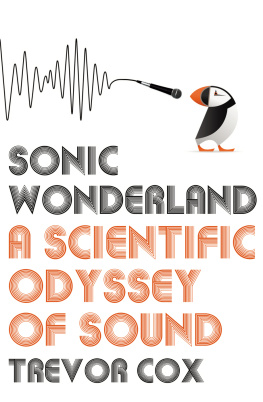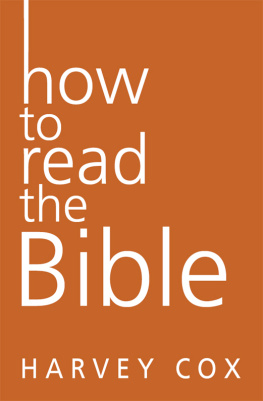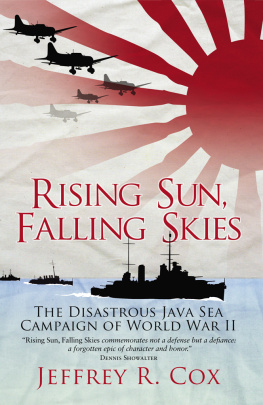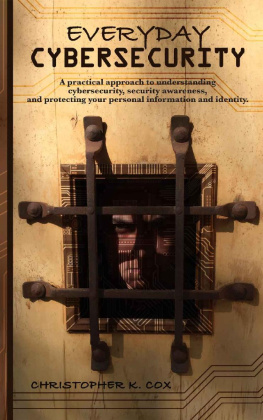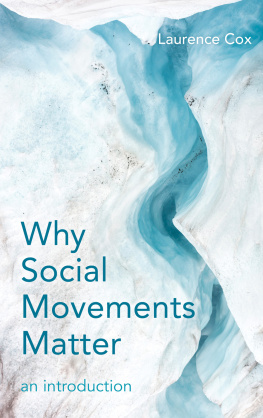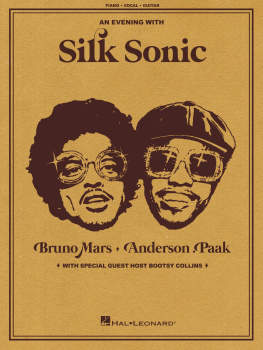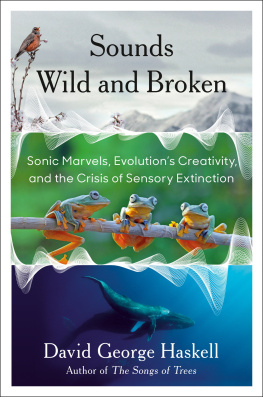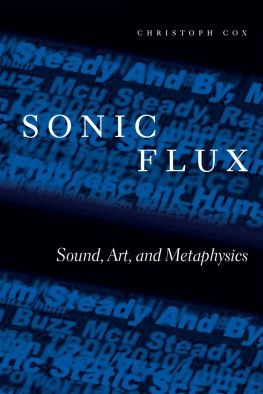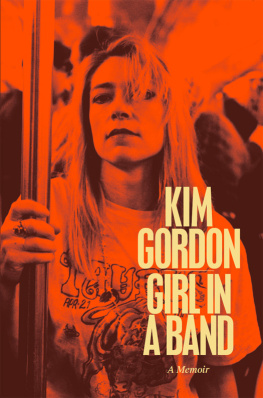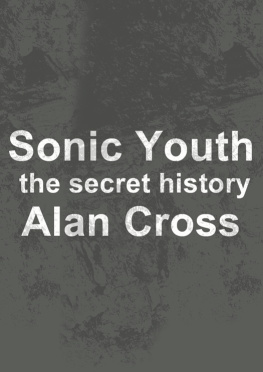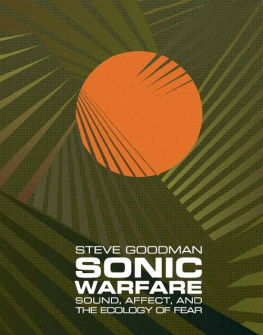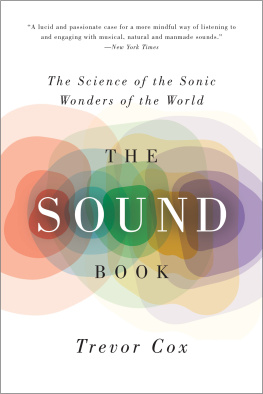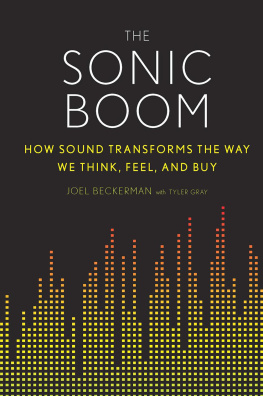Contents
About the Book
As an acoustic engineer, Cox has spent his career eradicating odd noises echoes in concert halls, clamour in classrooms. But then he heard something so astonishing that he had an epiphany: rather than quashing curious and bizarre sounds, we should be celebrating them the sonic wonders of the world.
Sonic Wonderland is the story of his investigation into the mysteries of these sonic wonders. Cox travels to the Mojave Desert where sand dunes sing. In France he discovers an echo that tells jokes. In California he drives down a musical road that plays the William Tell Overture.
Touching on physics, music, archaeology, neuroscience, biology, and design, Cox explains how sound is made and altered by the environment, how our body reacts to peculiar noises, and how these mysterious wonders illuminate sounds surprising dynamics in everyday settings from your bedroom to the opera house.
Sonic Wonderland encourages us to become better listeners in a world dominated by the visual and to open our ears to the glorious cacophony all around us.
About the Author
Trevor Cox is Professor of Acoustic Engineering at the University of Salford and President of the Institute of Acoustics. He has presented numerous science radio documentaries and has written for the New Scientist. He is an associate editor for an international journal of acoustics. Twitter: @trevor_cox
Sonic Wonderland
A Scientific Odyssey of Sound
Trevor Cox

List of Illustrations
Loudspeaker used to test Hamilton Mausoleum.
Wormit water reservoir.
Entrance to Waylands Smithy.
Richardsons rock harmonicon.
Resonances in two small spaces.
The call of the snowy tree cricket.
The call of the common pipistrelle.
Aeolus.
Focusing effects of two different rooms.
Animation showing sound moving under Echo Bridge.
A single hand clap at one end of a long tube.
A clap and its reflections from inside a culvert.
Sound chirping from a staircase.
Reflections of a clap from the staircase of Kukulkan.
Acoustic signatures of the Kukulkan pyramid and a quetzal bird.
Athanasius Kirchers cat piano.
Simplified tracing of a plate from Kirchers Phonurgia Nova.
Diffuser for a curved wall, National Museum of the Native American.
Focusing in the Mapparium.
Teufelsberg.
Sound and reflections from bursting a balloon, Teufelsberg radome.
Sound in the Ear of Dionysius.
Architrave whispering pipe at Clonmacnoise.
Sound in a whispering gallery.
Sound created using the Teufelsberg radome as a whispering gallery.
New whispering walls.
Kelso Dunes, Mojave Desert.
The anechoic chamber at the University of Salford.
The Cutting Edge fountain, Sheffield railway station.
The High-Tide Organ in Blackpool.
Two notes adding together to cause beats.
A single saxophone note.
The ring from Big Ben.
Two combined saxophone notes that sound consonant.
Two combined saxophone notes that sound dissonant.
Satellite image showing airflow around Alejandro Selkirk Island.
Organ of Corti.
Thomas Youngs double-slit experiment.
Grooves in a musical road.
Unless otherwise stated, images are drawn by Trevor and Nathan Cox. Richard Deane took the Aeolus Photograph (figure ) is NASA Goddard Photo and Video photo stream.
Acknowledgements
It has been a privilege to discuss acoustics with many great people over the last twenty-five years. I would like to thank the following, who, for this book, explained acoustic phenomena to me or helped me to gain new sound experiences: Keith Attenborough; Mark Avis; Michael Babcock; Barry Blesser; David Bowen; Stuart Bradley; Andrew Brookes; Angus Carlyle; Mike Caviezel; Dominic Chennell; Rob Connetta; Frances Crow; Marc Crunelle; John Culling; Peter Cusack; Helen Czerski; Peter DAntonio; Bill Davies; Charles Deenen; Stphane Douady; John Drever; Bruno Fazenda; Linda Gedemer; Tim Gedemer; Tony Gibbs; Wendy Hasenkamp; Marc Holderied; Diane Hope; Seth Horowitz; Simon Jackson; Brian Katz; Paul Kendrick; Allan Kilpatrick; Tim Leighton; Jane MacGregor; Katherine MacLean; Paul Malpas; Barry Marshall; Henric Mattsson; Bryony McIntyre; Daniel Mennill; Andy Moorhouse; Myron Nettinga; Stuart Nolan; James Pask; Lee Patterson; Chris Plack; Eleanor Ratcliffe; Brian Rife; John Roesch; Duncan from the Royal Society for the Protection of Birds (RSPB); Martin Schaffert; Ann Scibelli; Clare Sefton; Jonathan Sheaffer; Bridget Shield; Matt Stephenson; Davide Tidoni; Rupert Til; Lamberto Tronchin; Rami Tzabar; Nathalie Vriend; Chris Watson; Nick Whitaker; Andrew Whitehouse; Heather Whitney; Pascal Wyse; the staff at Luray Caverns; members of Subterranea Britannica; the teachers, coordinators, fellow retreatants and staff at the Buddhist retreat; and anyone else I accidentally left off this list.
I thank the Engineering and Physical Sciences Research Council for my Senior Media Fellowship, which gave me the time to develop the proposal for this book. Also many have helped me to develop as a science communicator, including staff at the BBC Radio Science Unit and New Scientist.
My agent, editors and copy editor have been highly influential in shaping the overall narrative of this book and improving the writing. Im indebted to Stephanie Hiebert, Tom Mayer, Zoe Pagnamenta, Kay Peddle, Peter Tallack and Gemma Wain.
Thank you to Nathan Cox, who helped with some of the diagrams. Finally, thanks to the following, who commented on early drafts: Deborah, Jenny, Peter and Stephen Cox.
THE SONIC WONDERS OF THE WORLD
Visit www.sonicwonderland.co.uk to listen to some of the sonic wonders of the world.
Prologue
Is it safe? A noxious odour was invading my nostrils as I stared down the open manhole. The metal ladder disappeared into the darkness. I had assumed a radio interview on the acoustics of sewers would involve an official and authorised visit. Instead, it started with a walk into a London park on a summers evening. Bruno, the interviewer, produced a large key from his backpack, opened up a convenient manhole cover, and invited me to climb down. Was it legal to wander around the sewers without permission? What if the tunnel suddenly flooded? What about a canary to warn of poisonous gases? Meanwhile, strolling commuters ignored us as we gazed into the gloom.
I repressed my anxieties and climbed gingerly down the ladder to the sewer about 6 metres below. This was a storm drain built in Victorian times, a long cylindrical tunnel lined with bricks. The floor was treacherous and slippery, and the smell made my skin crawl. I clapped my hands as best I could with rubber gloves on and started to count in my head very slowly one, two, three... timing how long it took the sound to die away. After 9 seconds a distant rumbling echo returned to me. Sound travels a kilometre every 3 seconds, so my clap had travelled a round trip of 3 kilometres. Later on, far away down the tunnel, we discovered the staircase off which the sound had bounced; it was draped in disgusting debris.
I found it difficult to avoid head-butting the stalactites hanging from the low ceiling. Sadly, these were not brittle rock, but crusty, fatty deposits clinging to the bricks. These foul stalactites broke off, worked their way down the back of my shirt and scraped my skin. Since Im tall, my head was very close to the ceiling the worst place for the revolting stalactites, but the optimal position for observing an unexpected acoustic effect. As the radio interview started, I noticed my voice hugging the walls of the cylindrical tunnel and spiralling into the distance. Speech spun around the inside of the curved sewer like a motorcyclist performing in a Wall of Death. While every other sense was being overwhelmed with revulsion, my ears were savouring a wonderful sonic gem. This impressive spiralling toyed with me as I tried to work out what was causing the effect. It was so different from anything I had experienced before that I started to doubt what I was hearing. Was it just an illusion, with the sight of the cylindrical sewer fooling my brain into thinking the sound was curving? No; when I closed my eyes, the reverberance still embraced my voice and twisted it around the tunnel. What was causing the sound to stay at the edges of the sewer and not cross into the middle? I have worked in architectural acoustics for twenty-five years, yet the sewer contained a sound effect I had not heard before. I also noticed that Brunos voice was embellished with a metallic twang as it echoed in the sewer. How was that possible in a place devoid of metal? We were surrounded by bricks.
Next page
